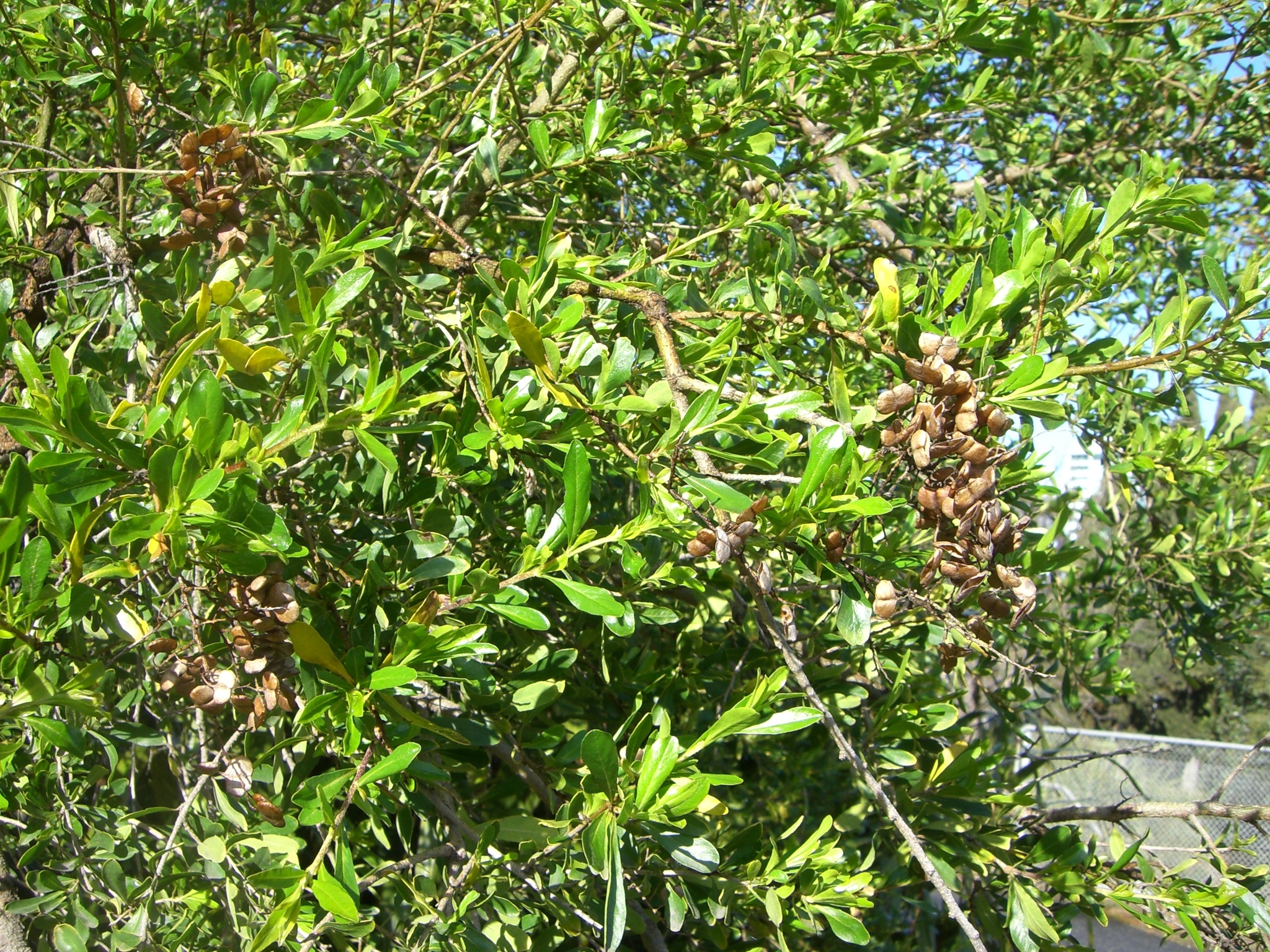
Latin bursa — pouch, purse, referring to the similarity of the fruit to that of the Shepherd’s Purse, Capsella bursa-pastoris.
Rhizomatous shrubs and small trees with distinctive juvenile and adult stages; in juvenile stages the leaves are numerous, mostly obovate, clustering around spiny short shoots; in adult stages spiny short shoots are rare, and the leaf arrangement is usually alternate. Flower clusters pyramidal masses of sweet-smelling, tiny cream flowers, sepals often absent, petals spreading from the base. Ovary shortly stalked. Fruit a flattened, thin-walled, 2-chambered capsule, roundish to kidney- or heart-shaped.
7 species in all states and territories.
Seed. Best results achieved if left to mature 6-12 months after they are shed.
Spiny shrubs covered in sweet-smelling, tiny white flowers, followed by numerous, flattened, brown, purse-shaped capsules that rattle.
Cayzer et al. (1999).
Source: (2002). Pittosporaceae. In: . Horticultural Flora of South-eastern Australia. Volume 3. Flowering plants. Dicotyledons. Part 2. The identification of garden and cultivated plants. University of New South Wales Press.
